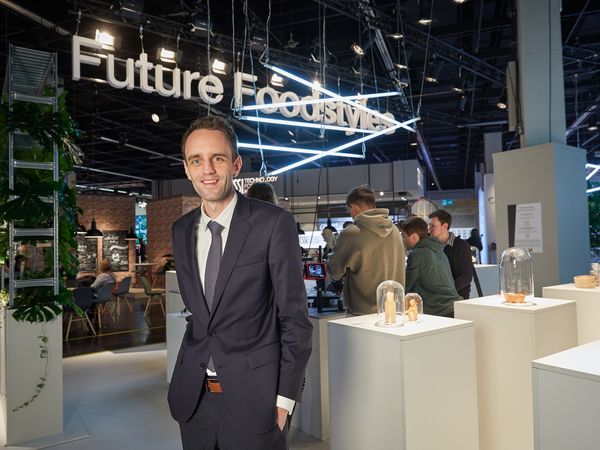‘Alexa, finish grilling the aubergines!’ Is that the new trend of the future?
(laughs) Yes, I would say that is clearly one of the trends! SmartHome, the digitalisation of furnishings, furniture and built-in appliances, is a huge topic. It's a trend we need to be prepared for.
The imm cologne is the world's leading furniture fair. LivingKitchen is considered the world's largest kitchen event. What are the visitor numbers for the double trade fair?
In 2011, we established LivingKitchen as a separate, highly international event within the framework of the imm cologne. This year, 150,000 visitors attended the two fairs! Particularly in the first few days for trade visitors, the visitor numbers are very international at around 53%. The decisive factor in marketing the imm cologne and LivingKitchen, as well as the other events in the field of living and furnishing, is the connection to our trade fairs abroad. Of course, we also use these to promote Cologne as a location, and in the end that helps us to increase the number of visitors from these markets here at our events as well. We bring the world to Cologne and I can say that the world really does come!
Does that also play a role in the question of how Koelnmesse manages to keep stars like the imm cologne or Anuga for such a long period of time?
It certainly does. It's about industry expertise and knowing what the customers need. A huge part of the success story of many trade fairs has to do with the close cooperation with the industry, which affects the constant conceptual development of each event. In the end, a trade fair is always a show of innovations. We take up topics that will be important for the industry in a few years. Together with the exhibitors, we always think a little ahead. Then a trade fair concept works well. In addition, there are the location advantages: We are a city trade fair in a very attractive location that appeals to people even beyond the trade fair. Of course, this helps to create a certain customer loyalty. Cologne's easy accessibility also plays a role. We have three airports nearby and a decent rail connection to Frankfurt. And we are building for the future: with our Koelnmesse 3.0 investment programme, we are making the entire site fit for the future by 2030. We are modernising, we are working on the traffic and parking situation, and we are creating the basis for digital services. And we are creating new exhibition, congress and event facilities that will make new events and formats possible for the entire Cologne location.
The way to a city's heart is clearly through its stomach. Cologne Tourism is responding to this with the focus topic Culinary Cologne. How many stars would you give Cologne in the food category?
Well, I was born in Cologne, so I would always give Cologne 5 stars in everything! (laughs) What I really like about Cologne and what I also enjoy is the diversity that Cologne offers. I can go to a brewery or to one of the many restaurants that offer cuisine from all over the world. And it is precisely this diversity that makes the city so charming for me as a native of Cologne!
How does Koelnmesse demonstrate its food expertise?
Koelnmesse has a huge amount of expertise in mapping the entire value chain: with Anuga and ISM, we have trade fairs that deal with the finished product – e.g. chocolate. We have trade fairs that focus on the machines that produce food and on packaging machines. And Cologne has LivingKitchen, which shows how food is processed. This means that Koelnmesse has a unique portfolio!
Johann Lafer is cooking for you: what would you like for dinner?
(Laughs) I'd challenge him with a vegetarian meal! Or ask him if he can cook a classic Cologne dish like Himmel und Ääd (heaven and earth). But then he should eat it with me.
